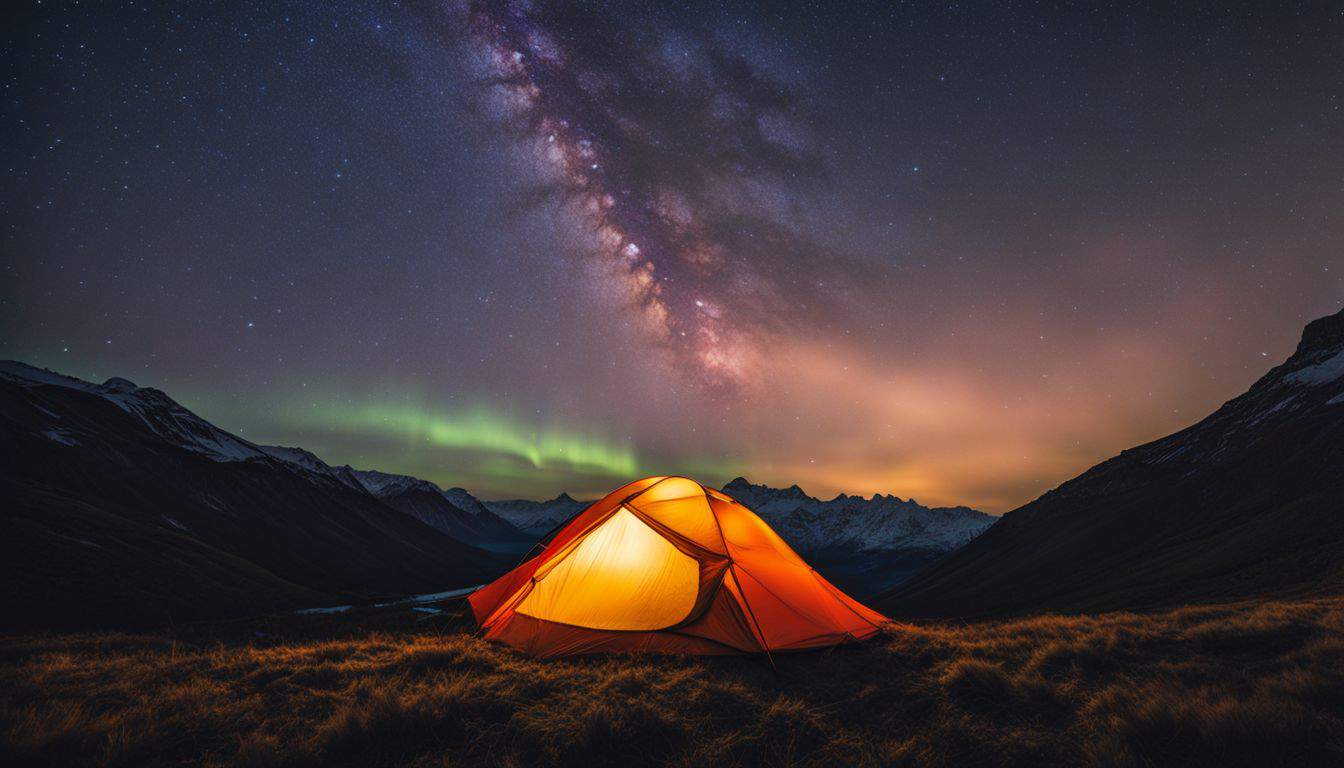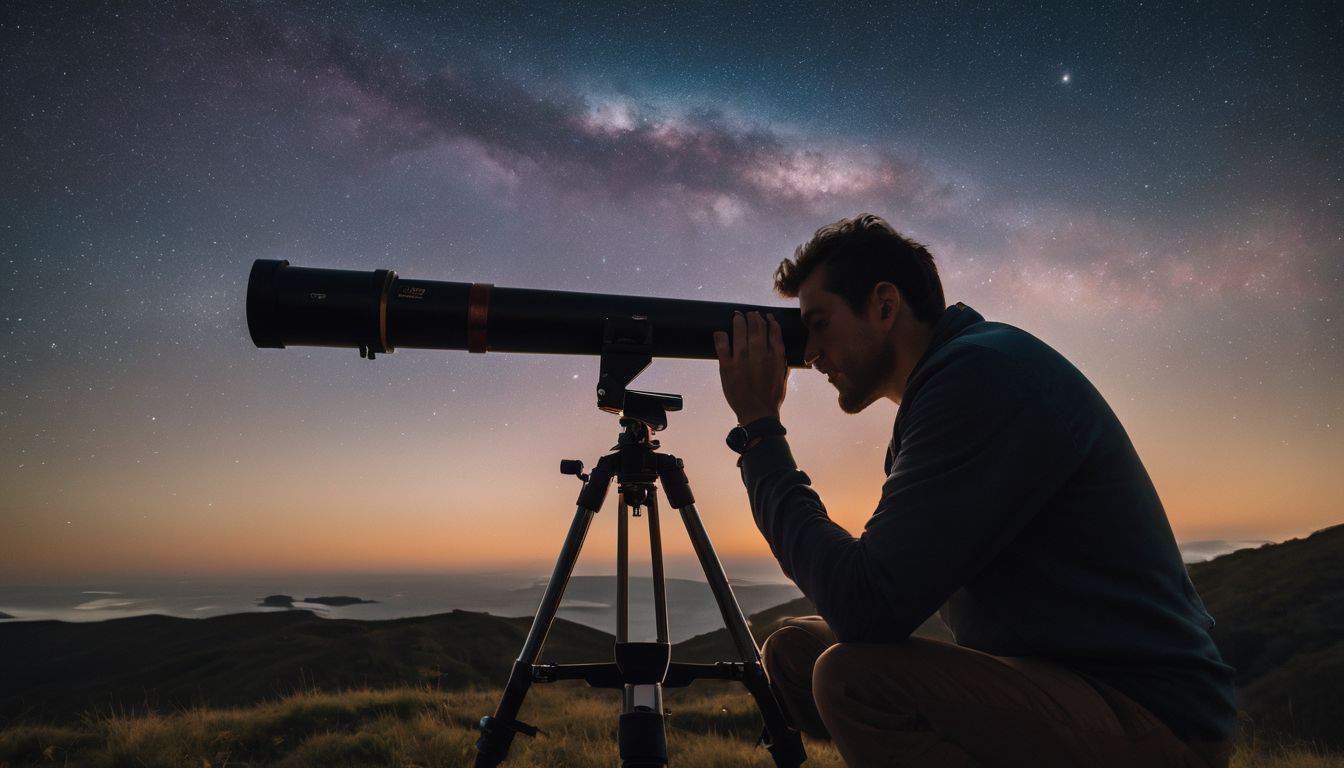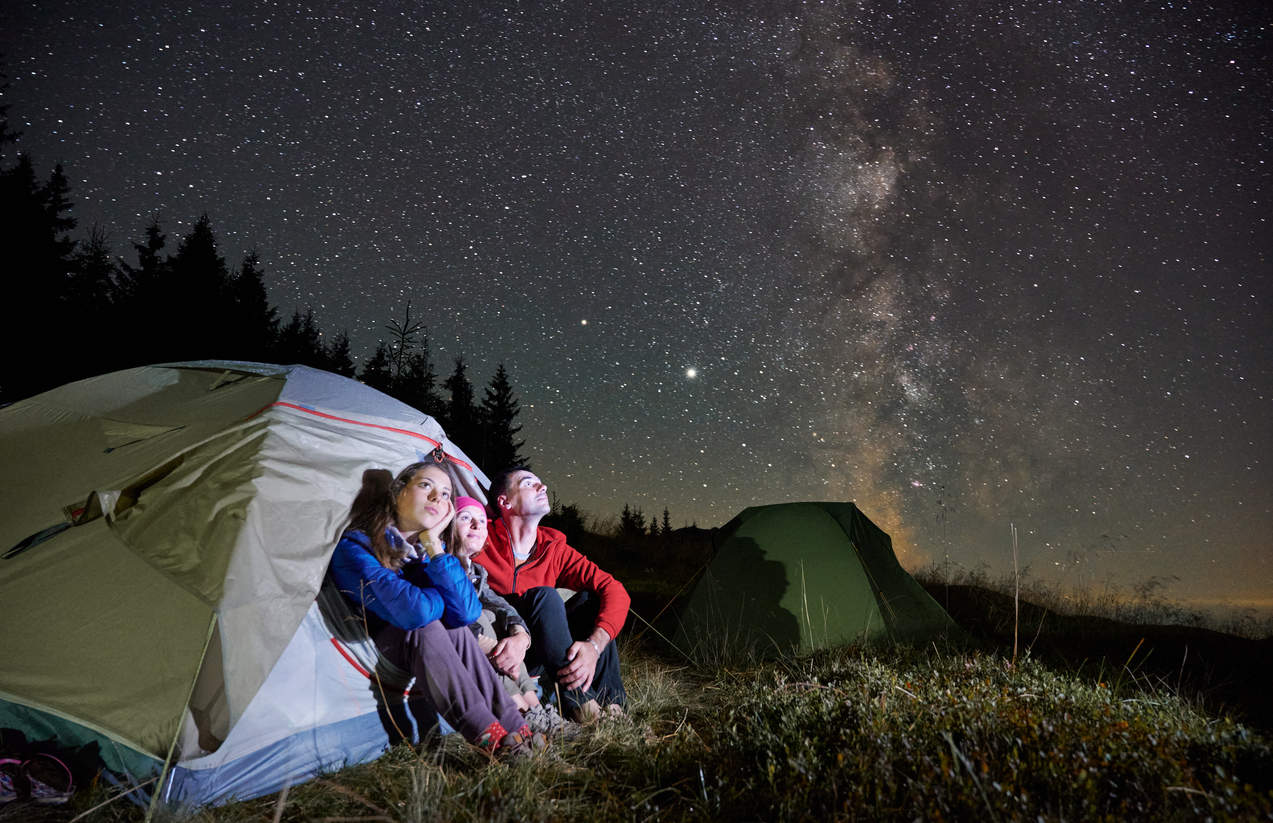Stargazing is one of the most awe-inspiring activities you can enjoy while camping. There’s something magical about looking up at a sky full of twinkling stars while surrounded by nature. This guide will help you make the most of your nighttime sky-watching experience on your next camping trip.
Choosing the Perfect Stargazing Location
To get the best views of the night sky, you’ll want to find a dark location away from light pollution. This is crucial for optimal stargazing experiences:
- Look for campgrounds in rural areas, far from city lights. The further you are from urban centers, the less light pollution you’ll encounter. National forests, state parks, and remote camping areas often offer excellent dark sky conditions.
- Consider International Dark Sky Parks or Preserves. These designated areas are specifically protected for their pristine night skies. Places like Natural Bridges National Monument in Utah or Cherry Springs State Park in Pennsylvania offer exceptional stargazing opportunities[1][4].
- Use dark sky maps to find optimal viewing locations. Websites and apps like Dark Site Finder or Light Pollution Map can help you identify areas with minimal light pollution[5].
When planning your trip, carefully check the weather forecast and try to avoid cloudy or rainy nights. Clear skies are essential for stargazing. Additionally, consider the phase of the moon when scheduling your trip. The moon’s phase significantly impacts visibility – new moon periods offer the darkest skies for seeing faint stars and celestial objects. During a full moon, the increased brightness can wash out fainter stars and deep-sky objects.

Essential Stargazing Gear
To enhance your stargazing experience, consider bringing along some basic equipment:
- Binoculars (7×50 or 10×50 recommended) or a portable telescope. Binoculars are an excellent starting point for beginners, offering a wide field of view and ease of use. For more serious stargazers, a portable telescope can reveal detailed views of planets, star clusters, and galaxies.
- A reclining chair or blanket for comfortable viewing. Stargazing often involves looking up for extended periods, so comfort is key. A reclining camp chair or a thick blanket can make your experience much more enjoyable.
- Red flashlight to preserve night vision. Red light doesn’t interfere with your eyes’ dark adaptation, allowing you to read star charts or move around without ruining your night vision.
- Warm clothing and extra blankets. Temperatures can drop significantly at night, especially in open areas. Layer up and bring extra blankets to stay comfortable throughout your stargazing session.
- Star charts or smartphone apps like Stellarium. These tools can help you navigate the night sky and identify celestial objects. Physical star charts are great for a traditional approach, while apps offer interactive features and real-time sky mapping.
For photography enthusiasts, don’t forget your camera and tripod if you want to try your hand at astrophotography. A DSLR or mirrorless camera with manual settings, a wide-angle lens, and a sturdy tripod are essential for capturing the night sky. A thermos with hot drinks is also nice to have on chilly nights, helping you stay warm and alert during your stargazing session.
Stargazing Techniques and Tips
Allow your eyes at least 20-30 minutes to fully adjust to the darkness. This process, known as dark adaptation, is crucial for seeing fainter stars and celestial objects. During this time, avoid looking at any bright lights or screens. Use red light for reading charts or moving around to maintain your night vision.
Start by learning some easy-to-find constellations like the Big Dipper, Orion, and Cassiopeia. These prominent star patterns serve as excellent starting points for navigating the night sky. The Big Dipper, part of Ursa Major, is visible year-round in the northern hemisphere and can help you locate the North Star (Polaris). Orion, with its distinctive belt of three stars, is a prominent winter constellation, while Cassiopeia’s W-shape is easily recognizable in the northern sky.
Use these constellations as reference points to locate other objects. For example, you can use the Big Dipper to find Polaris, which always points north. From there, you can orient yourself to find other constellations and celestial objects. Apps can help you identify planets, nebulae, star clusters, and galaxies. Many of these apps use your phone’s GPS and accelerometer to provide a real-time, interactive map of the sky above you.
Keep an eye out for meteors, especially during major meteor showers like the Perseids in August or Geminids in December. These celestial events occur when Earth passes through debris left by comets or asteroids. The streaks of light across the sky, often called “shooting stars,” are mesmerizing and can add excitement to your stargazing experience. During peak times, you might see dozens of meteors per hour under ideal conditions.
Enhancing Your Stargazing Experience
To take your stargazing to the next level:
- Research the mythology behind constellations. Many constellations have fascinating stories from various cultures. Learning these tales can add depth to your stargazing and help you remember star patterns.
- Join local astronomy clubs or attend star parties. These gatherings offer opportunities to learn from experienced stargazers and often provide access to high-quality telescopes. Many national parks and observatories also host public stargazing events[3].
- Try your hand at astrophotography. With some practice, you can capture stunning images of the night sky. Start with simple shots of star trails or the Milky Way, and gradually work your way up to more complex deep-sky photography.
- Use apps, but don’t let screens dominate your experience. While apps can be helpful for identifying objects, remember to spend most of your time actually looking at the sky. The goal is to connect with nature and the universe, not your device.
Stargazing Safety and Etiquette
When stargazing at your campsite, be mindful of others by keeping noise to a minimum and using red light. Follow Leave No Trace principles and be aware of your surroundings in the dark. Let others know where you’ll be stargazing, especially if leaving your campsite.

Conclusion
By following these expanded guidelines, you’ll be well-equipped to have an unforgettable stargazing experience during your camping trip. Remember, patience and practice are key to becoming proficient at identifying celestial objects. Each stargazing session offers a unique opportunity to connect with the vastness of the universe and create lasting memories under the night sky.

Leave a Reply